Valparaiso — where to start…this is going to be a tough post to write as I’m not sure how to capture this amazing place in words. I have to say that the first thing that comes to mind is simply how completely an unlikely a place this is. If there is a city built in a less hospitable topographic environment, I certainly don’t know where it is. It makes Lisbon or the mountain towns in central Italy or Seattle or any of dozens of other what would be considered hilly cities or locales look flat. Really. There is roughly a two block wide area that runs the length of the port that is flat (and that might all be fill, who knows?), otherwise the entire city of roughly 2 million is built on extremely steep hills that abut each other creating huge ravines, most of which are uncrossable. The houses are simply built adjacent, on top of, and sometimes over one another in a cascade that pretty much falls down the hills in a completely chaotic manner.

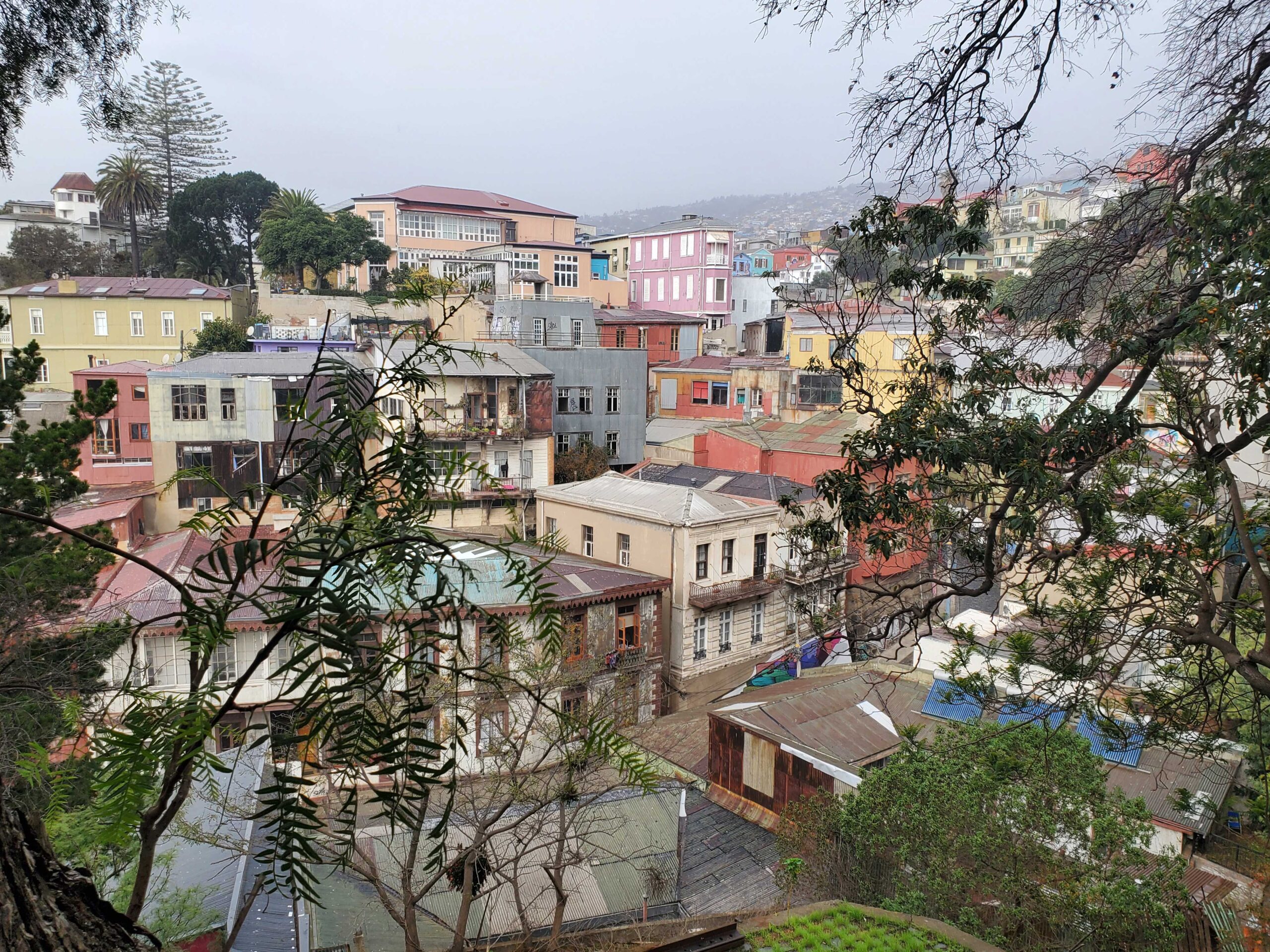
The city has been the victim of numerous earthquakes and fires over the years, and it really just seems like they build new structures on top of the ruins. I think in many cases this is due to the fact that there really is no way to get equipment into the city to do demolition. The streets are exceedingly narrow (there are miniature buses and garbage trucks and such) or simply footpaths and stairways, that ramble through the neighborhoods.

Getting Around Valparaiso
In theory, there is a network of funiculars (called Valparaiso ascensores built in the late 19th and early 20th century) that connect the neighborhoods with the port areas and each other; although unfortunately many of them aren’t currently running.
Our guess, which is somewhat confirmed by posted signs around the city, is that they were shut down due to COVID (classic overreaction, sigh) and as they are so old, didn’t start back up again as expected. As we have discussed previously, Chile is not in a good way and so they have not yet gotten many of them up and running. While this seems like our complaining from a tourism standpoint, it is really so much more.
The ascensores are the main form of transport in the City to many of the residential areas and therefore anyone who is not fit or able, is pretty much housebound or forced to take taxis or Uber to get around as buses can’t navigate many of the neighborhoods. One market we walked through had long taxi lines for people who needed to get up the hills back home. Needless to say the financial burden on many of the older and lower income residents is substantial and there was a lot of anti-government sentiment (rightly so) in the form of “No More Taxis” signs displayed in neighborhoods that were most affected.


Cerro Concepcion and Street Art
This is a pretty long-winded way of stating — what a cool city this is! It is a bit gritty and not particularly safe after dark in many areas. It is an illustration of urban decay at its worst. Yet, mixed throughout is fabulous architecture directly next to total ruins, charming footpaths through historic neighborhoods covered in graffiti and fabulous street art, abundant and outstanding street music, creative restaurants and cafes, fantastic streets that end abruptly and become viewpoints and informal drinking spots. Really just totally fun to experience, I can’t recommend a visit enough.
We stayed in a great hotel in the Cerro Concepcion neighborhood. It was modern and hip (we were out of our league) and had a great view of the harbor. What you can only barely see in this photo is that the rusty colored roofs in the center are ruins. Abandoned and likely unsafe buildings that are still standing from the last big earthquake (or fire? or urban decay?), and are open air but seem to have people living in them. We saw lights regularity in the one on the right — and it had a nice garden with fruit trees. The left was home to a rather large cat colony that was fun to watch during breakfast. Crazy example of how the city just continues to live around things that can’t be (or aren’t) torn down.

We were lucky enough to be on the top floor of the hotel (3rd floor); the excellent hotel bar was on what would be technically the -2 floor…to give you an idea of the vertical change, here are a couple of photos.
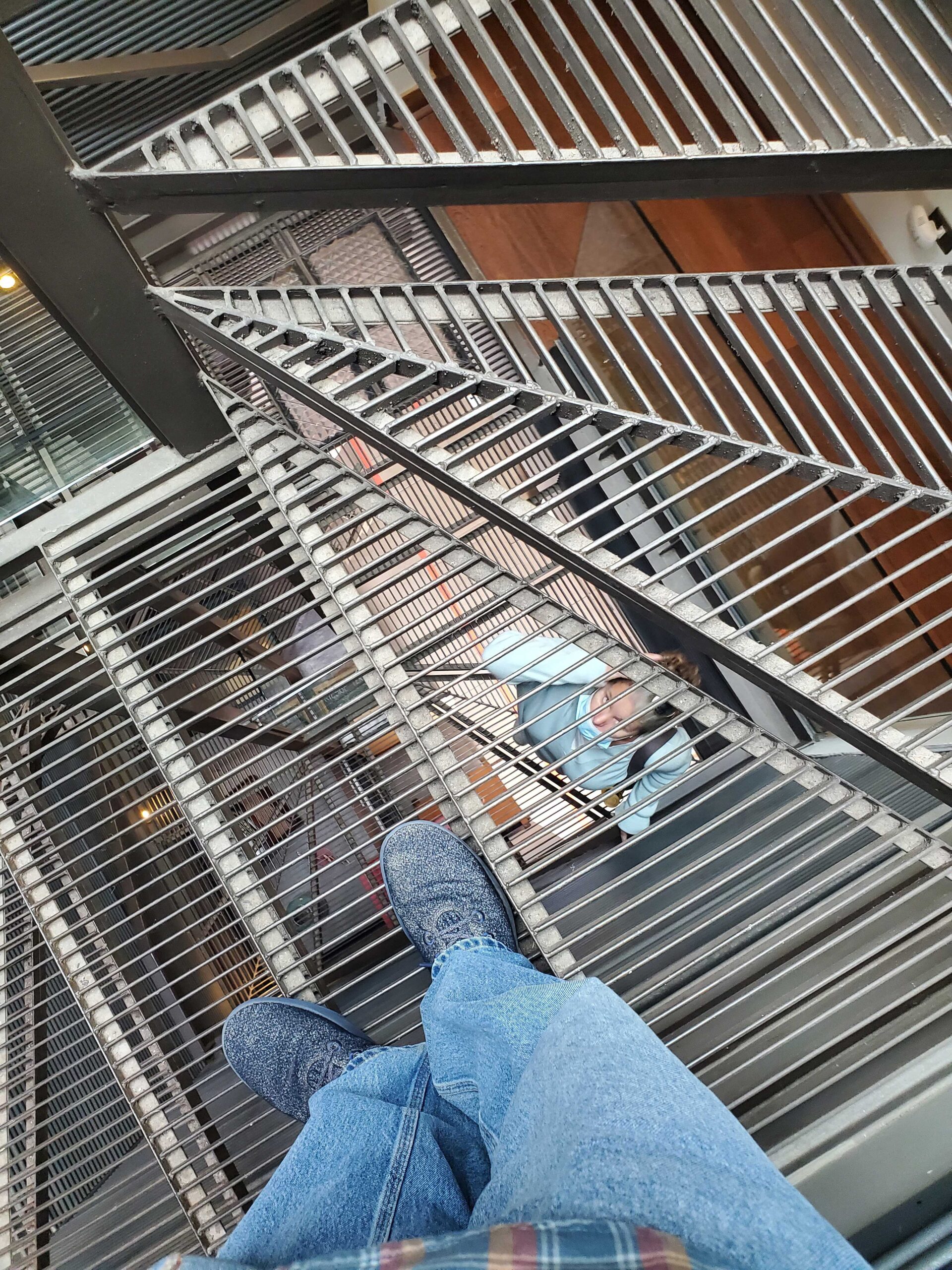

I’m not sensitive to heights, but even I was a bit unnerved by the sheer drop offs that were everywhere (I’m thinking of you Sheila) and how you just stood on balconies over deep ravines at every turn. As someone who has spent much of their life living in an earthquake prone city, participating in regular drills, and preparing for the inevitable upcoming quake, I cannot even imagine the devastation that would (and has in the past) occurred here.
We spent a couple of great days exploring (and not getting to see Pablo Naruda’s house unfortunately) and checking out the city. The street art is amazing and seen everywhere, although I do think arguably the best was in our neighborhood. Jake chose well when he made the reservations while I was in quarantine and pissed off at the world. Here are some of the best examples we saw:


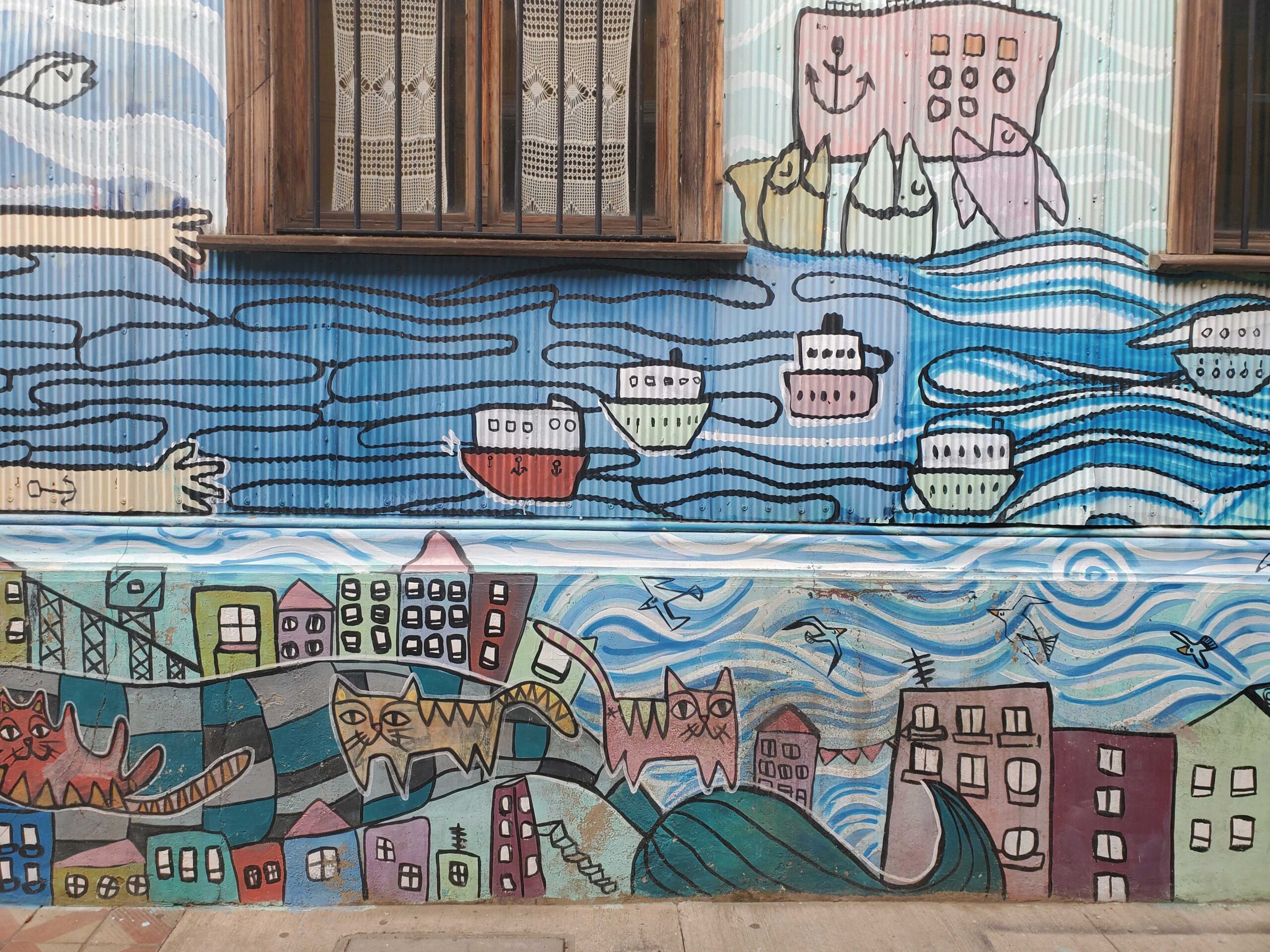
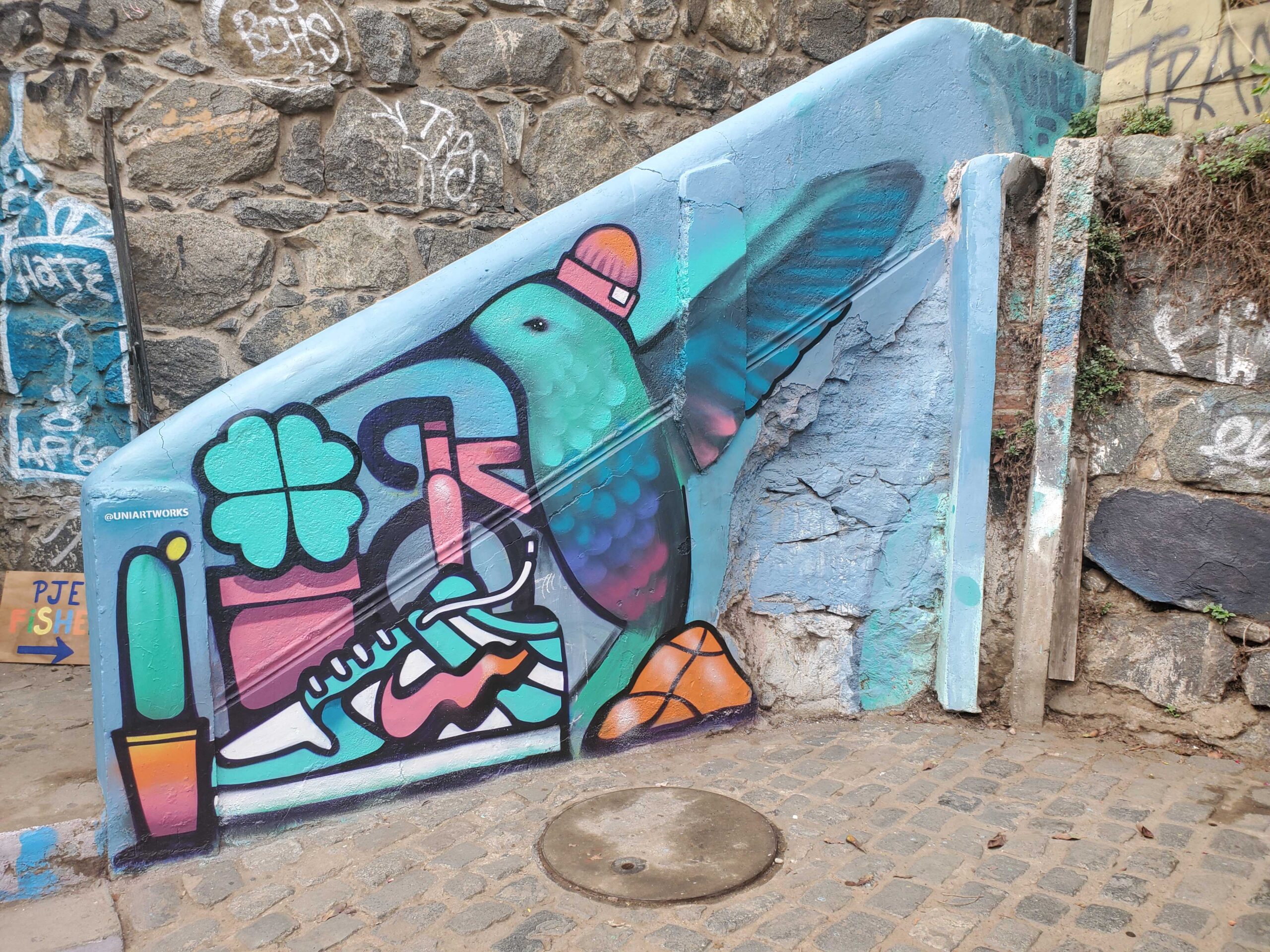
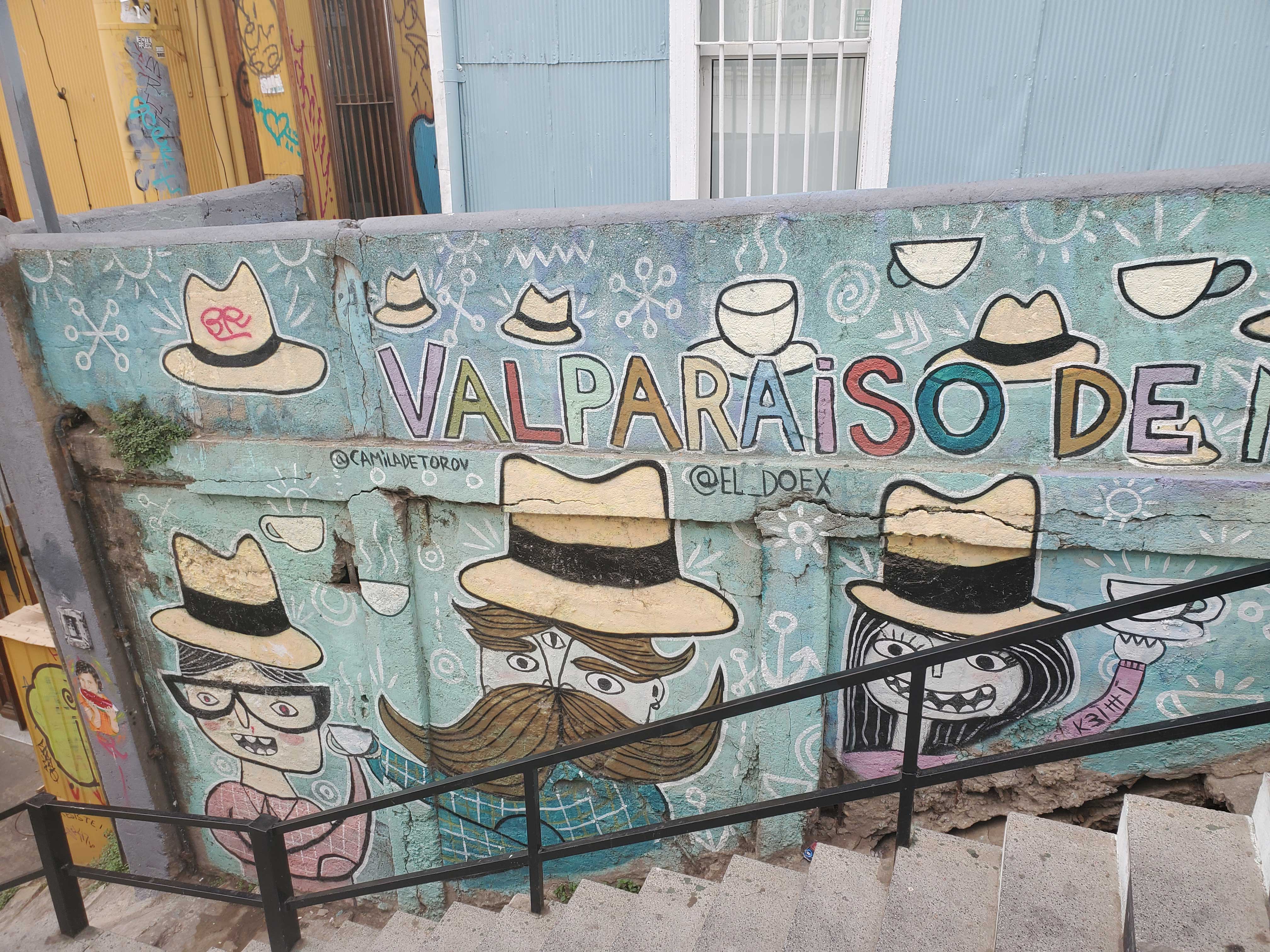

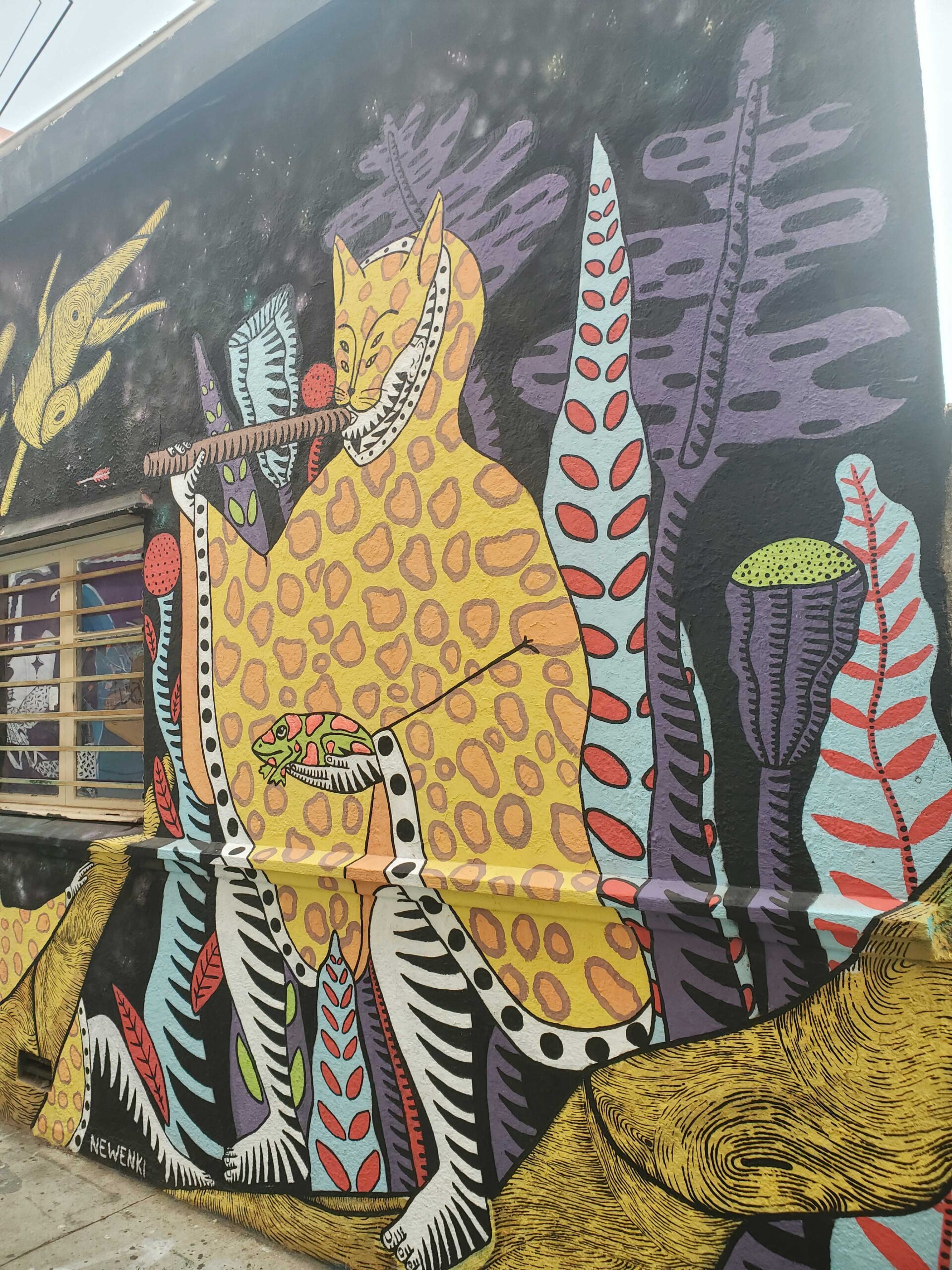

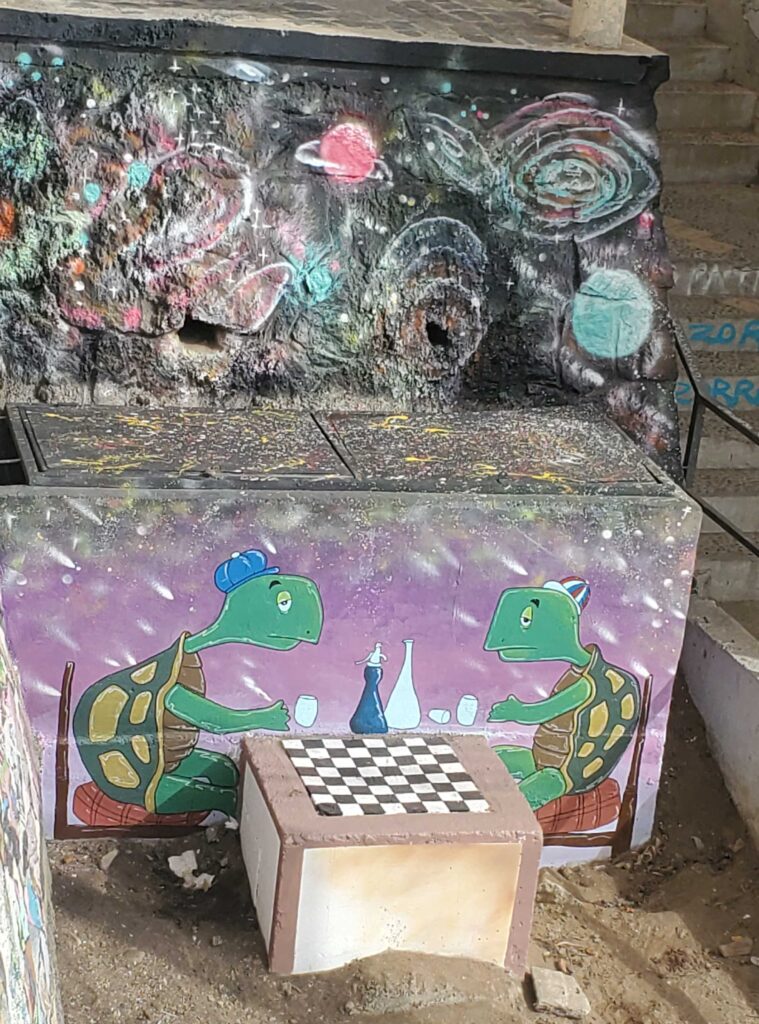
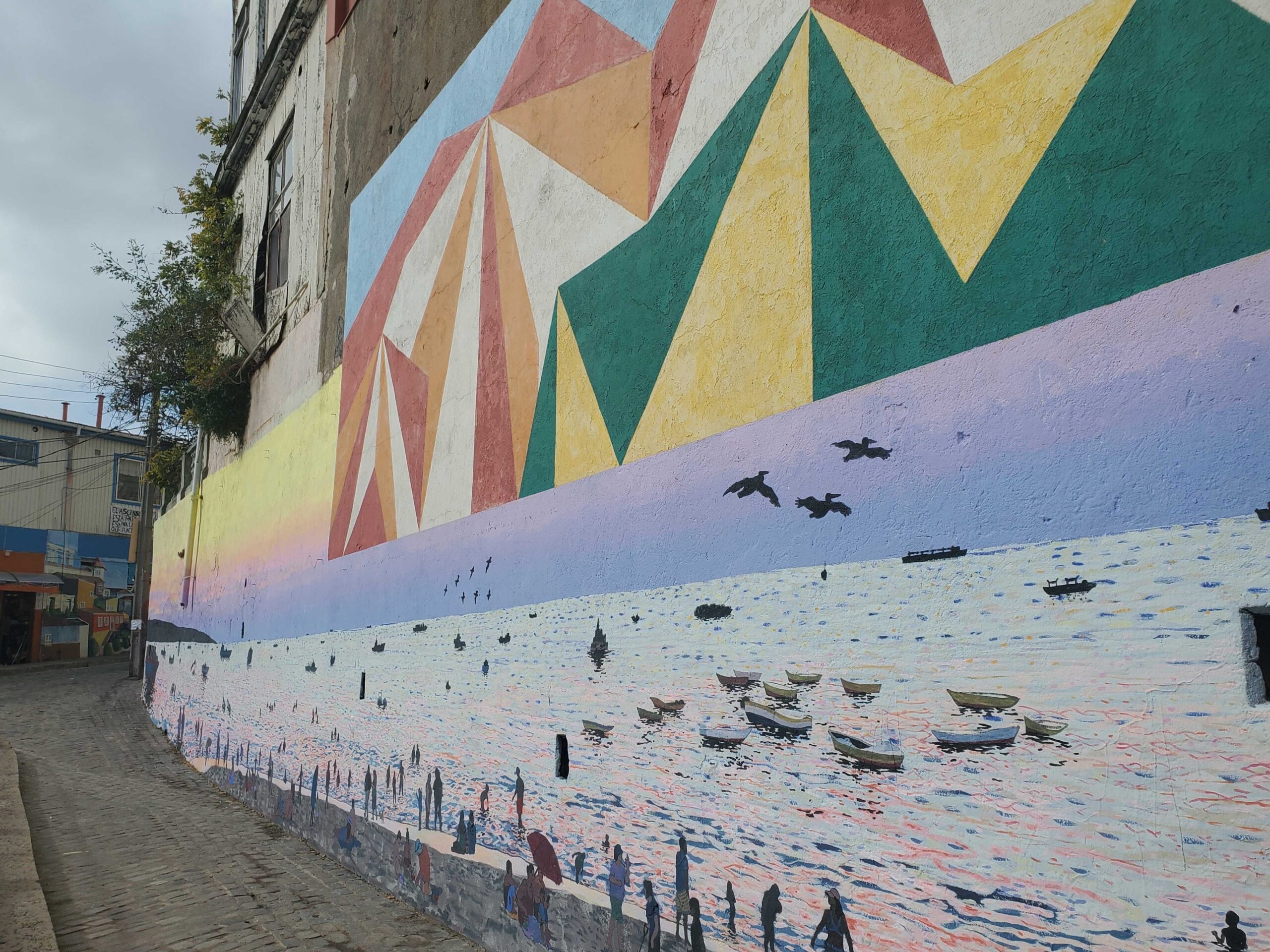

Around Valparaiso
The weather was lovely most of the time, and we totally enjoyed eating outside at night, obviously. There was an odd thing that we first noticed by seeing a large area with no lights in the distance after sundown. This seemed strange, as there were lights all around it and no lack of buildings on all the hills, obviously. Further investigation and a daytime look showed HUGE sand dunes across the bay from our hotel, known as Las Dunas to the locals.

Obviously we had to go and check it out for ourselves so decided to spend a couple of days on the coast to the north of Valpo. The dunes were interesting (apparently avery big spot for sandboarding — no we didn’t do it, ugh) but the coastal areas around them were not. Condos, fast food and oil refineries. Not great. We went further up and ended up in a great spot called Zapallar. It was lovely. We found a terrific hotel and had a couple of nice relaxing beach days. We lunched with pelicans, sat on a somewhat chilly but beautiful beach and met some great folks at the hotel and shared dinner. They were actually amazed we had found Zapallar and very interested in how we ended up there. It is a locals beach and not something frequented by tourists. All and all a terrific beach weekend!

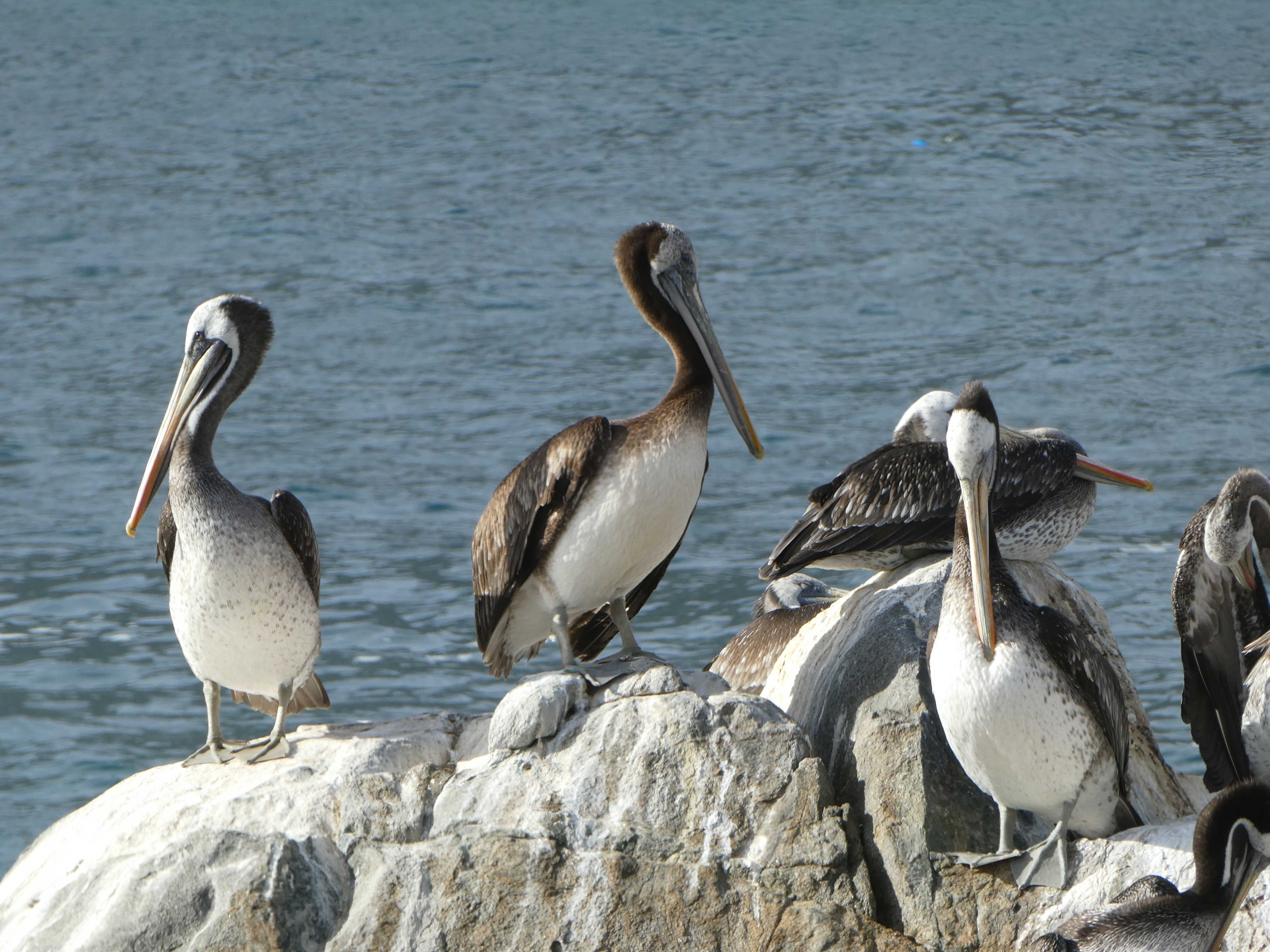
After a wonderful (and much needed after quarantine) week on the Chilean coast, we took our car back to the airport in Santiago and caught a plane north into the Atacama desert. Stay tuned.
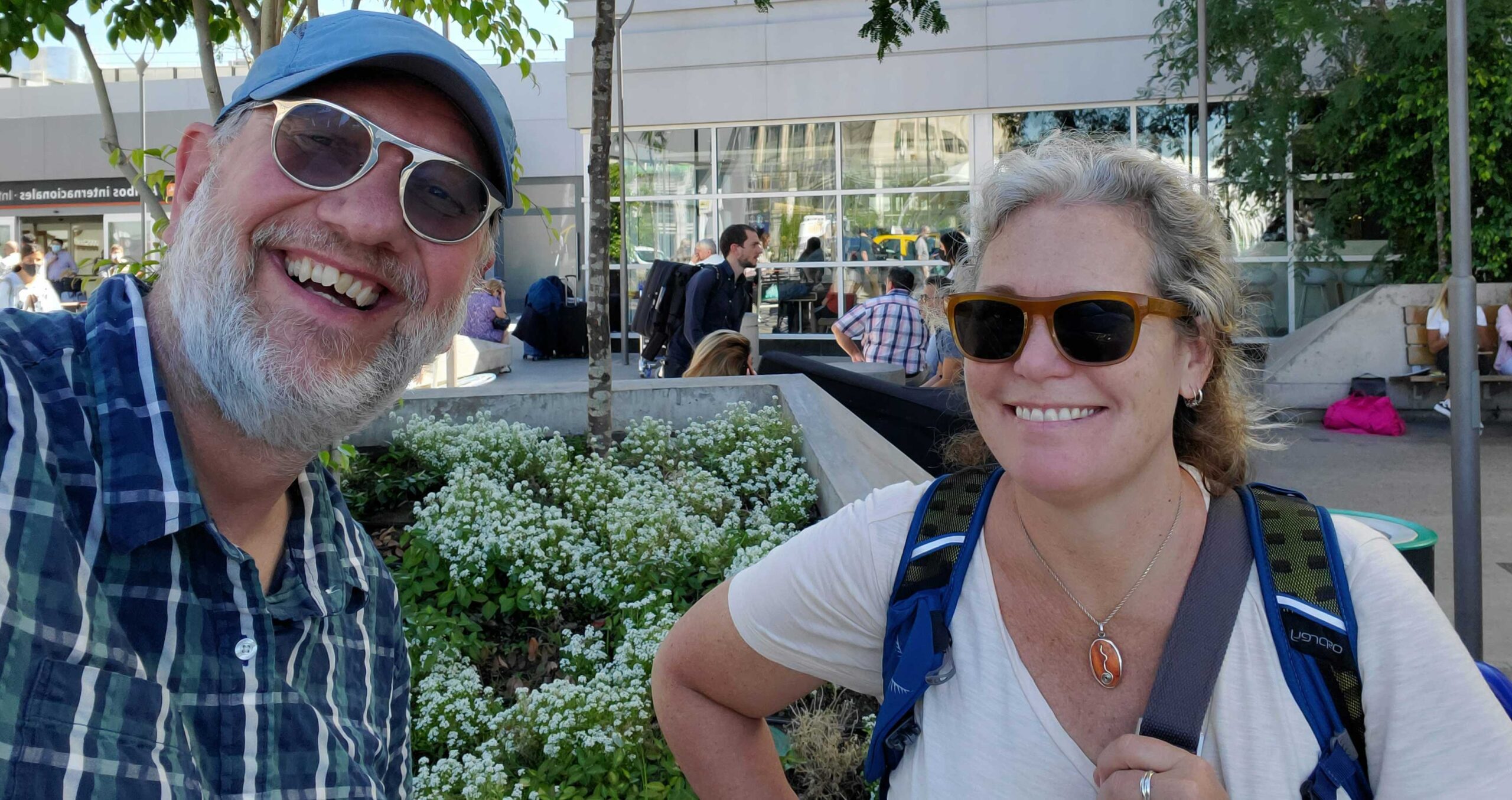
Pelicans!!
They were awesome! Lots more pictures. We watched them all afternoon.
My hands got a little sweaty just thinking about the drop offs. Also not sure how well I’d do on the see-through stairs if they were as steep as the one you showed! Glad I have you two to live vicariously through! 😉
Hi! Love the street art — seems like an amazing place!